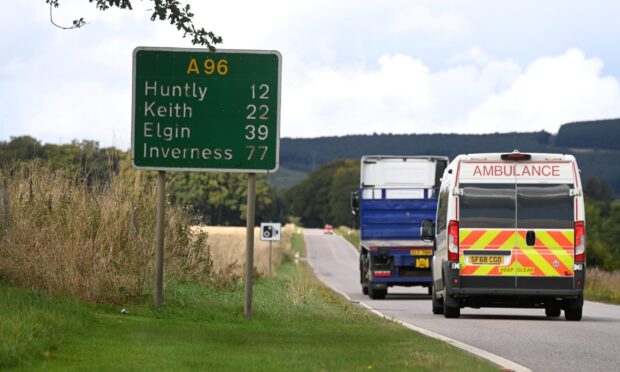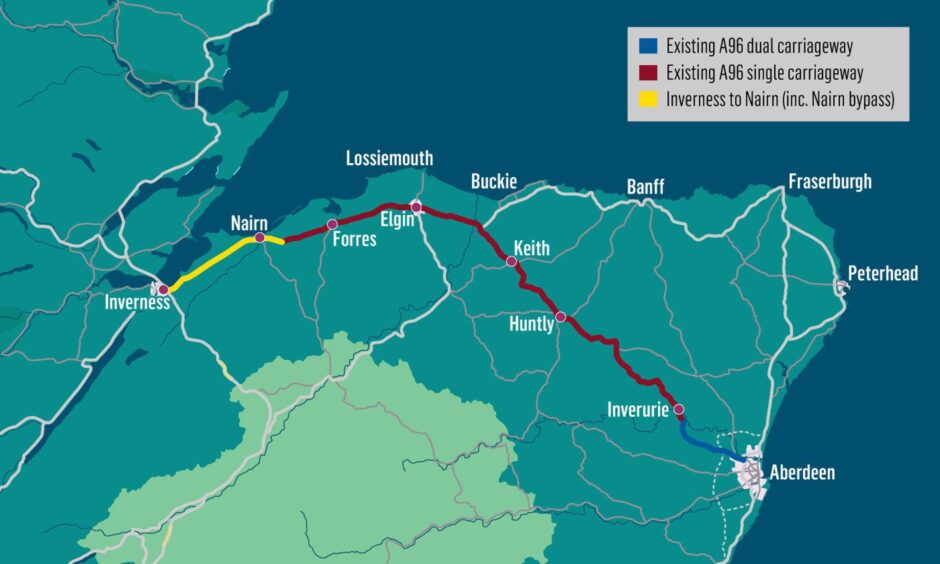A long-awaited A96 review has today made the case against fully dualling between Aberdeen and Inverness and instead suggested improvements including new bypasses at Elgin and Keith.
Consultants Jacobs Aecom’s independent review of the A96 corridor plans outline a “refined” package of eight options.
New bypasses are suggested for Elgin and Keith, along with improvements on the Aberdeen to Inverness railway line and targeted road safety improvements.
The review was ordered in 2021 when the Greens joined the SNP-led government. The party is out of government again and the dualling promise remains official SNP policy.
The dualling of the A96 from Inverness to Nairn, including Nairn bypass, is separate from the wider A96 review process.
The SNP promised to dual the route between Aberdeen and Inverness by 2030.
What are the eight measures?
The findings were published on Thursday morning, hours before Transport Secretary Fiona Hyslop delivered a statement at Holyrood.
The document lays out a “refined package” of eight measures, which consultants scores more favourably than full dualling.
Two of these measures are building bypasses in Elgin and Keith to deliver “shorter journeys, reduced congestion and fewer delays”.
Rail improvements along the Aberdeen to Inverness line are also suggested.
These include line-speed improvements to cut journey times to two hours, down from around two hours and 25 minutes.
Other rail measures suggested are the provision of passing loops to enable a more frequent passenger service and the provision of freight facilities.
Targeted road safety improvements is another of the options, such as improved overtaking opportunities and junction improvements.
Active travel routes like cycle paths and foothpaths are suggested in communities including Nairn, Forres, Elgin, Inverurie and Huntly.
And the other options are improved passenger facilities at bus stations and railway stations, including lifts and steps-free access and improved bus connections such as on-demand services in rural areas.
The final of the eight options would improve the provision of electric vehicle infrastructure along the A96 corridor.
Full dualling: ‘Major negative effects’
The report says full dualling is likely to have “major negative effects” when assessed against environmental criteria.
It reads: “This is mainly due to the construction footprint but also adverse effects of greenhouse gas emissions and local air quality from traffic emissions during the operational phase.”
Accident data has been analysed which shows the rural sections of the A96 have overall personal injury accident rates lower than or similar to the national average.
But in urban sections such as Forres and Keith, the accident rate is higher than the national average, with rate of killed or seriously injured “significantly higher” in these two towns.
In Keith, the rate is nearly five times the national average and just above three times in Forres, and other problem areas include between Hardmuir and Forres, Fochabers and Keith, Keith and to the east of Huntly, and between Kintore and Craibstone.
Scottish Tory North East MSP Liam Kerr said the report shows the “deck has been stacked against most of the project ever being started”.
The draft outcomes of the A96 Corridor Review have now been published for public consultation before a final decision can be reached by the Scottish Government.



Conversation